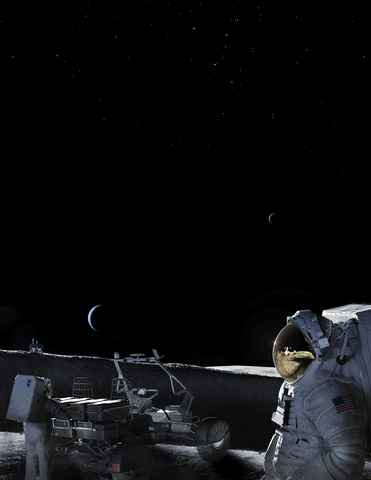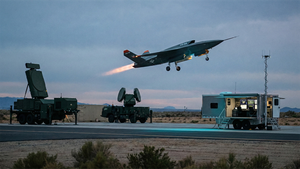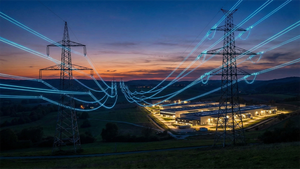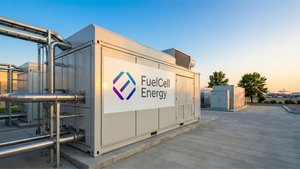Aeva’s Technology Solves Critical Challenges for Lunar Exploration by Enabling High Resolution Mapping and Precise Navigation in GPS-denied Environments Using Aeva’s Instant Velocity Data
Aeva® (NYSE: AEVA), a leader in next-generation sensing and perception systems, today announced that NASA’s Kinematic Navigation and Cartography Knapsack (KNaCK) Instrument project, a LiDAR-based mobile terrain-mapping and navigation system designed to support the next generation of lunar and planetary exploration, is using Aeva’s 4D LiDAR™ technology. Aeva’s technology, including the new Aeries™ II sensor, is expected to enable the KNaCK Instrument to create highly accurate maps of the lunar surface and provide precise navigation capabilities to overcome the lack of global positioning and navigation systems on the Moon. These capabilities are designed to support missions that are part of NASA’s Artemis program which aims to return humans to the Moon for the first time in more than 50 years.
This press release features multimedia. View the full release here: https://www.businesswire.com/news/home/20220421005434/en/

Photo credit: NASA
Already being used for advanced sensing and perception in the automated vehicle and industrial automation industries, Aeva’s 4D LiDAR capabilities go beyond what is possible with traditional sensors like cameras and legacy 3D LiDAR. Aeva’s technology detects per point instant velocity in addition to 3D position, enabling the KNaCK Instrument to leverage the sensor’s 4D Localization™ capabilities. These capabilities are expected to allow the instrument to build a real-time, highly accurate three-dimensional representation of lunar topography and provide precise positioning data to allow astronauts and rover vehicles to safely navigate the Moon.
Aeva’s technology also helps the KNaCK Instrument overcome other challenges specific to the Moon’s South Pole, one of the regions that will be explored by NASA’s Artemis missions. The low solar incidence at the lunar South Pole means the sun never appears more than three degrees above the horizon, exposing cameras and legacy LiDAR sensors to significant optical interference that prevents their effective use. This region of the Moon also has areas that are permanently shadowed or have long persistent shadows that prohibit photogrammetry-based navigation. Aeva’s Frequency Modulated Continuous Wave (FMCW) technology is immune to optical interference from the sun and can operate in the dark, allowing astronauts and rovers to use the KNaCK Instrument to explore and map the lunar surface anytime, day or night.
“We are thrilled NASA is using Aeva 4D LiDAR technology to enable the next generation of lunar exploration and to collaborate with them on the KNaCK Instrument project to help astronauts carry out critical objectives of NASA’s Artemis program,” said James Reuther, Vice President of Technology at Aeva. “This is another example of how powerful and flexible Aeva’s 4D LiDAR platform really is, whether helping autonomous vehicles safely navigate our roadways or by allowing the next wave of space exploration to solve mission-critical challenges like precise navigation in environments where there is no GPS such as on the Moon. We look forward to pushing the boundaries of technology and supporting the continued success of this transformational mission.”
“The KNaCK sensor is a surveying tool for both navigation and science mapping, able to create ultra-high-resolution 3D maps at centimeter-level precision,” said Michael Zanetti, KNaCK Project Manager and Principal Investigator at NASA's Marshall Space Flight Center, in a NASA release. “Taking advantage of the latest advancements in LiDAR technology from Aeva, our next-generation space-hardened unit with support from Torch Technologies will be about the size of a soda can and could enable lunar surface operations like never before. It also will help ensure the safety of astronauts and rover vehicles in a GPS-denied environment such as the Moon, identifying actual distances to far-off landmarks and showing explorers in real time how far they’ve come and how far is left to go to reach their destination.”
Beyond the benefits of mapping and navigation, Aeva’s high-resolution sensor data can also be used to create high-definition terrain maps, useful for landing site visualizations. The KNaCK project is also exploring additional applications that leverage Aeva’s instant velocity-sensing capabilities to detect airborne particulates, such as the way rocket plume exhaust interacts with lunar and planetary surfaces and for measuring small scale atmospheric phenomena like dust devils.
For more information on the NASA Artemis program, visit: www.nasa.gov/specials/artemis
About Aeva Technologies, Inc. (NYSE: AEVA)
Aeva’s mission is to bring the next wave of perception to a broad range of applications from automated driving to industrial robotics, consumer electronics, consumer health, security and beyond. Aeva is transforming autonomy with its groundbreaking sensing and perception technology that integrates all key LiDAR components onto a silicon photonics chip in a compact module. Aeva 4D LiDAR sensors uniquely detect instant velocity in addition to 3D position, allowing autonomous devices like vehicles and robots to make more intelligent and safe decisions. For more information, visit www.aeva.com, or connect with us on Twitter or LinkedIn.
Aeva, the Aeva logo, 4D LiDAR, Aeries, Ultra Resolution, 4D Perception, and 4D Localization are trademarks/registered trademarks of Aeva, Inc. All rights reserved. Third-party trademarks are the property of their respective owners.
Forward looking statements
This press release contains certain forward-looking statements within the meaning of the federal securities laws. These forward-looking statements generally are identified by the words “believe,” “project,” “expect,” “anticipate,” “estimate,” “intend,” “strategy,” “future,” “opportunity,” “plan,” “may,” “should,” “will,” “would,” “will be,” “will continue,” “will likely result,” and similar expressions. Forward-looking statements are predictions, projections and other statements about future events that are based on current expectations and assumptions and, as a result, are subject to risks and uncertainties. Many factors could cause actual future events to differ materially from the forward-looking statements in this press release, including, but not limited to: (i) the ability to maintain the listing of Aeva’s securities on the New York Stock Exchange, (ii) the price of Aeva’s securities, which may be volatile due to a variety of factors, including changes in the competitive and highly regulated industries in which Aeva plans to operate, variations in performance across competitors, changes in laws and regulations affecting Aeva’s business and changes in the combined capital structure, (iii) the ability to implement business plans, forecasts, and other expectations and to identify and realize additional opportunities, (iv) the risk of downturns and the possibility of rapid change in the highly competitive industry in which Aeva operates, (v) the risk that Aeva and its current and future collaborators are unable to successfully develop and commercialize Aeva’s products or services, or experience significant delays in doing so, (vi) the risk that Aeva may never achieve or sustain profitability; (vii) the risk that Aeva will need to raise additional capital to execute its business plan, which may not be available on acceptable terms or at all; (viii) the risk that Aeva experiences difficulties in managing its growth and expanding operations, (ix) the risk that third-parties suppliers and manufacturers are not able to fully and timely meet their obligations, (x) the risk of product liability or regulatory lawsuits or proceedings relating to Aeva’s products and services, (xi) the risk that Aeva is unable to secure or protect its intellectual property; and (xii) the effects of the ongoing coronavirus (COVID-19) pandemic or other infectious diseases, health epidemics, pandemics and natural disasters on Aeva’s business. The foregoing list of factors is not exhaustive. You should carefully consider the foregoing factors, and for a further discussion of the material risks and other important factors that could affect our financial results, please refer to our filings with the SEC, including our Form 10-K for the year ended December 31, 2021. These filings identify and address other important risks and uncertainties that could cause actual events and results to differ materially from those contained in the forward-looking statements. Forward-looking statements speak only as of the date they are made. Readers are cautioned not to put undue reliance on forward-looking statements, and Aeva assumes no obligation and does not intend to update or revise these forward-looking statements, whether as a result of new information, future events, or otherwise. Aeva does not give any assurance that it will achieve its expectations.
View source version on businesswire.com: https://www.businesswire.com/news/home/20220421005434/en/
Contacts
Media:
Michael Oldenburg
press@aeva.ai
Investors:
Andrew Fung
investors@aeva.ai

















